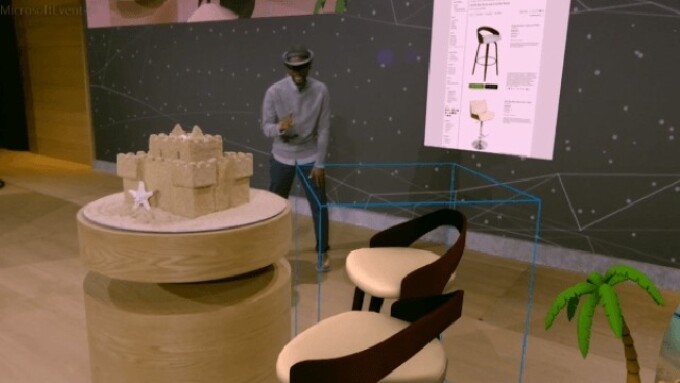NEW YORK — Microsoft has unveiled its vision for the future, with a special Windows 10 and Surface event held earlier today.
Highlighting the event was a presentation on the HoloLens augmented reality (AR) headset, and its role in presenting mixed and virtual reality content, with Microsoft’s General Manager Megan Saunders on point to reveal the possibilities.
On tap was a demo of HoloLens and the current crop of VR headsets, all of which are compatible with Microsoft’s newly updated Windows 10 operating system.
“With Windows 10,” Saunders explains, “you can move your content from the real world to the digital world seamlessly.”
Saunders showed the audience how HoloLens works with the latest version of Microsoft Paint for 3D drawing, among other applications — including previewing the appearance of new furniture in a home before purchasing it, illustrating the wide range of applications envisioned for this technology.
“The most interesting [AR demo] was probably an integration with Houzz, an online renovation store,” Chris Mills wrote for BGR.com. “The demo showed off picking a chair off the website, and then pushing a 3D model into real life using Hololens. It lets you view furniture or decorations in your home before buying it, which could genuinely be useful if you’re trying to buy important things online.”
According to Microsoft CEO Satya Nadella, the firm sees a future based on “mixed reality.”
“[The] field of view becomes an infinite display,” Nadella says. “You see the world and in the world you see virtual objects and holograms.”
It is an indicator that the “VR future” many observers see is really an “AR future” populated with mixed media elements that engage users in realistic (and not-so-realistic) scenarios.
Also on display was Microsoft’s HoloTour holographic app that allows users to visit different cities with an immersive VR experience that is sure to cut down on jet lag.
“Holotour is a special experience that allows you to explore and interact with new places,” Saunders explains. “It was made for Microsoft HoloLens, but here it is in virtual reality running on Windows 10.”
One key takeaway was that in addition to HoloLens, Microsoft also sees an entire ecosystem of third-party VR headsets operating under Windows 10, with near-term price points starting at under $300.
Whatever the future holds, it is already moving beyond simple VR to more advanced integrations that are sure to drive consumer demand — and provide inspiration for content creators and marketers — including those operating in the adult entertainment industry.








